Bordeaux 2009: Chronicle of a harvest
April 19, 2010
Harvest Chronicle
A week in Bordeaux for the 2009 harvest: sunny skies and patient pickings…
By Panos Kakaviatos
Before you plow through my copious notes on Bordeaux 2009 – hundreds from cru bourgeois level to the first growths of the Medoc – please plow through my day-to-day impressions at various châteaux on location at the tail end of the Bordeaux 2009 harvest. It is one thing to taste the wine from barrel, but an added plus to have been there when the grapes were picked. For more details on my harvest outlook, readers can go HERE or HERE. Also, several articles from decanter.com on over extraction worries, extravagant praise for the harvest and some of the newest gadgets and techniques from the harvest. and All in all, 2009 promises to be an excellent vintage, a vintage that will combine some of the heat of 2003 (but not nearly as hot!) with some of the classicism of 1986 and some of the richness – on the Left Bank at least – of 1996. At least that is how Mouton Rothschild winemaking director Philippe Dhalluin put it to me on the eve of a special dinner for harvesters held at the chateau, which featured a large format bottle of a sumptuous 1975 Mouton Rothschild, the first fine vintage since Mouton Rothschild was officially recognized as a first growth from the Medoc. This harvest chronicle thus includes harvest impressions but also detailed tasting notes one some of the finest wines from Bordeaux , starting with lunch with harvesters at Château Palmer on 28 September and ending early in the morning of 6 October with some lovely photos of harvesters at Chateau Brane Cantenac, also in Margaux. Tastings include Cheval Blanc and Figeac in St. Emilion, a fine vertical of Chateau Grand Mayne, also in St Emilion as well as verticals of Châteaux Lagrange in St Julien and a lovely 2006 horizontal of top Pomerol estates. Lunches and other tastings include Léoville Barton in St. Julien, Châteaux Lynch Bages and Pichon Comtesse in Pauillac among many others.
Monday, 28 September: Visit and lunch at Château Palmer, visit and vertical tasting at Château Lagrange (St. Julien)
Tuesday, 29 September: Morning visits to Château Figeac and Château Cheval Blanc, then visit, vertical tasting and lunch at Château Grand Mayne with owners Jean-Antoine and Marie-Françoise Nony and harvesters
Wednesday, 30 September: Visit and tasting at Moueix headquarters in Libourne (horizontal of the 2006 vintage) followed by lunch at Château Magdelaine (St. Emilion) with Christian Moueix and Jean Claude Berrouet and harvesters, afternoon visit with harvesters at the recently renamed Château Bélair-Monange (used to be just Bélair) at St. Emilion. Dinner at Mouton Rothschild with an excellent 1975.
Thursday, Oct 1: Visit to Château Climens in Barsac and vertical of this great Barsac wine, followed by a visit to and dinner at Domaine de Chevalier in the Pessac-Léognan appellation: wines tasted blind, with some surprising results.
Friday, Oct 2: Morning horizontal tasting of 2000 Pessac Leognans – red and white – at Domaine de Chevalier, lunch with Jean-Charles Bages of Château Lynch Bages followed by visit and vertical tasting at the château. Visit and vertical tasting – 1990-2007 – at Château Grand Puy Lacoste, with a simply superb 2000 vintage! Dinner with Patrick Maroteaux of Chateau Branaire Ducru – some excellent just fermenting 2009 samples, followed by a great vertical, where the 2001 and 1996 both shined.
Saturday, Oct 3: Visit at Château Langoa Barton – final day of harvest, while neighbor Léoville Barton was just starting with the Cabernet! – followed by lunch with Anthony and Eva Barton. Wonderful conversation and superb wines sans pretention. This is what Bordeaux is all about.
Sunday, Oct 4: Visit and tasting at Chateau Ducru Beaucaillou, lunch with harvesters at Chateau Grand Puy Lacoste, and an excellent 1979 GPL!
Monday, Oct 5: Visit and tasting of Château Gruaud Larose followed by visit and lunch with harvesters at Château Pichon Comtesse de Lalande, with much detail on the months leading to the harvest, and an afternoon vertical at Château Brane Cantenac where the 2005 truly transcended the rest.
Tuesday, Oct 6: Photos of early morning harvesters at Château Brane Cantenac followed by an excellent lunch with Bordeaux enologist Nicolas Vivas and his wife Nathalie in their beautiful country home. Nicolas gave me the title of one article on the harvest: the harvest of little miracles.
Château Palmer visit and lunch
Before lunching with scores of harvesters – many of them students from Denmark – I surveyed the arrival of Merlot grapes with just two sorters. Two parcels had been picked on Friday 25 September and they stopped over the weekend. The skins were very thick, thicker than in 2005, said Bernard de Laage de Meux of Château Palmer. He explained that sorting will be less intense this year – compared to 2008 and 2007 – because of a general high quality of grapes picked. Very high natural alcohol levels were recorded: about 13 to 13.5 for Cabernet and up to 15.5 for some Merlot. That actually had me a bit worried…The Danish students come from a university which has a regular contract with the château – every year students come from Denmark to earn credit for practical work such as harvesting. Over lunch with winemaking director Thomas Duroux, we enjoyed some of the press wine from the 2008 vintage of Palmer, which was very tasty. The food, included Moroccan couscous, was hearty enough to satiate the hunger of the hard, backbreaking work by the harvesters and I felt almost guilty to be eating with them, as I hardly deserved the hearty fare!
Chateau Lagrange vertical and visit
On my first day in Bordeaux during the harvest I visited for the first time ever Chateau Lagrange in St. Julien, where they were experimenting with an optical sorter. The sprawling estate counts 117 hectares of vines and has enjoyed a good if not stellar reputation as a fine St Julien Bordeaux. Certainly not in the league of Ducru Beaucaillou or Léoville Barton, this estate however has improved its work in the vineyard and in the vat room, resulting in greater consistency for both the first and second wines. It was impressive to see the 32 stainless steel vats. In 2009 about 60% of the wine will go into the second wine Fiefs de Lagrange. About 120 harvesters work for the estate. The quality of the harvest was fine with 12 to 12.5 natural alcohol for the Cabernet and 14 for the Merlot, which is ‘a bit high,’ Bruno Eynard said. He showed me a more gentle reception hopper – and the previous one with enormous blades. Public relations representative Charlotte and Eynard then showed me into a lovely tasting room, inspired, Eynard said, by the work of Château Lynch Bages’ Jean Michel Cazes, a very elegant surrounding. Tasting notes as follows:
Fiefs de Lagrange 2008: 57% Cabernet, 29% Merlot, 14% Petit Verdot. Slightly softer color and a tad vegetal on the nose. They fined the wine in December 2009.
Lagrange 2008: 73% Cab, 26% Merlot and 2% Petit Verdot, this wine shows lovely ripe cassis, almost jammy, with some licorice, and overall a very fine expression. ‘We would like to be more elegant,’ Eynard said. He was amazed to hear that neighbor Léoville Barton was picking his Cabernet today, surprised that it was ‘so early.’ Interesting!
Lagrange 2007: 68% Cabernet, 25% Merlot and 7% Petit Verdot. In bottle since July 2009, the wine is like medicinal root beer with oak derived notes. An uninspiring vintage…
Lagrange 2006: 59% Cabernet, 41% Merlot. Very pretty aroma, herbal and fresh – with an almost hay aspect. The palate exudes a mix of red and black fruit but especially freshness and minerality. Very nice. Interestingly, Eynard likes the 2008 more than the 2006.
Lagrange 2005: 46% Cabernet, 45% Merlot and 9% Petit Verdot. Very licorice like, very rich and rather powerful on the palate. Perhaps a tad monolithic today? It is actually quite closed and yet one can sense the strength in this wine. Re-tasted 20 minutes later in glass, it displayed a really lovely balance of acidity/richness.
Lagrange 2000: 76% Cabernet and 24% Merlot. 13% alcohol. There is a truffle aspect already here, with potpourri and black olive. There is also a cedar aspect on the palate that pleases greatly. Just a bit warm on the finish but overall a very nice wine. Eynard sees greater amplitude with the 2005 and more linearity with the 2000. Makes sense to me, as both are excellent wines.
Les Arums de Lagrange 2008. A lovely white from the Medoc and the 2008 is not exception. Made in 80% new oak, and stirring of the lees. 60% Sauvignon Blanc, 30% Semillon and 10% Muscadelle. I get peach and white fruit with some pleasingly soft lime notes. Overall very pleasing and probably very good with oysters on a half shell. Not very complex.
Morning visits to Château Figeac and Cheval Blanc
I arrived as planned at Château Figeac but owner Eric d’Aramon showed up late looking rather cool on a big motorcycle! In any case, I tasted the final blend from the 2008 with one of the administrative assistants from the office, Josiane, and it displayed candied cranberry aspects with good ripe notes of plum, some black fruit – overall very fresh and tasty. This was not coming from a new oak barrel. This confirmed my enthusiastic impression with Figeac 2008 tasted earlier this year from barrel. Fine job.
By the time Eric showed up, I had to go to my next appointment at Cheval Blanc, where I tasted again the 2008 which proved better this time around. Winemaking assistant Pierre Olivier Clouet cautioned against over-extraction. ‘I have never seen so many over extracted wines as in 2005,’ he said. He did not want to be quoted but he did cite some of the “usual suspects” from the Right Bank I have named…
Cheval Blanc 2008. Nose is mint and chocolate and dark fruit. Substance. Good structure and acidity, a pH of 3.65. A mix between the 1998 and the 2001, he said. He also said that pH goal is about 3.7… In 2009 natural alcohol for Merlot was 14 and for Cabernet Franc it was 13.5. Regarding alcohol, ‘we do not want it to come to the fore, as it is already risky to have [such high levels].
What was interesting in comparing Figeac with Cheval Blanc is that the latter was richer and more full bodied, and yet remained fresh. Very nicely done.
Visit, vertical and lunch at Château Grand Mayne with Jean-Antoine and Marie-Françoise Nony
I love this estate, which makes a hearty and often lip-smacking good St. Emilion. Owner Jean-Antoine welcomed me to show me the condition of the vines and explain the weather patterns up until late September. The mid-September rains were heavy at about 60mm – which represents 10% of annual rainfall. Potential alcohol measured at 14.9 at the foot of the slope. Jean-Antoine showed me a particular plot of land which is low slope to foot of the slope as Grand Mayne’s ‘Romanee Conti’, joked Jean-Antoine. We walked up along the vines and it was an impressive sight to see. About 40 harvesters were working. We then moved to the reception room at the château, with three sorting tables. The first table removes leaves and any sick grapes. Last year there was a greater problem of coulure (shattering) – so you had buckets that were much more filled with sick grapes. In 2009 buckets were mostly empty. In 1973, they got stainless steel vats – one of the first estates to have that. Jean-Antoine also showed me the use of dry ice to conserve fruit aromas; I saw it over the vat for a pre-fermentation cold maceration. Since 2002, they have employed dry ice for the cold maceration; I have always been a skeptic of this method, which I have also seen at Quinault l’Enclos and at Albert Bichot in Burgundy. Their magnificent 1998 and 2000 did not need this method so why use it since? Still, the wines of Grand Mayne are very good with or without the use of dry ice. 60% new oak used. Since 1999, malolactic in barrel. No fining, light filtering before bottling. 14-18 months in barrel. Blending after aging. Before lunch, we did a mini vertical followed by lunch with yet more Grand Mayne wines, and I felt like scoring…
Grand Mayne 2008. No Cabernet Sauvignon, 80% Merlot and 20% Cabernet Franc. Shows very pleasing ripe plum flavors, a tad warm with the alcohol showing just a bit. 13.5 91/100
Grand Mayne 2007. Smoky aspect. Somewhat stalky but not too discernable. There is a fine red cherry coming through as well, but the finish dries a bit, too. 75% Merlot, 20% Cabernet Franc and 5% Cabernet Sauvignon. 87/100
Grand Mayne 2006. Reminds Jean Antoine of the 2004, which he prefers for now. Same blend as with the 2007, this wine is rich and plum like, a more streamlined style that is pleasurable. 91/100
Grand Mayne 2005. Very rich aroma, and full bodied palate, but not overdone if for a bit of dryness on the finish. This has high alcohol at 14.5. 75% Merlot, 15% Cab Franc and 10% Cab Sauv. I hope that it does not dry out, given the high alcohol, but it has a lot of chutzpah and I like it. 93/100
Grand Mayne 2000. Hint of nail polish but that blew off. Then I got minerality and licorice. Slightly thicker than the 1998 but not quite as fine. 13.5% 91/100
Grand Mayne 1998. Very nuanced, with a hint of truffle but freshness, too. 13%. Overall image of being sexy yet polished. This is undoubtedly the best wine I have ever had from this estate. Superb. 95/100
Grand Mayne 1995. There is a slight rusticity creeping in on this wine, but I like creosote aspect albeit with a touch of funk. Not bad. 89/100
The last three wines we enjoyed over a hearty lunch with some harvesters, as you can see in the photo, above.
With Edouard Moueix, a tasting at Moueix headquarters of the 2006 vintage
Edouard was saying that with Merlot limit between perfectly ripe and overripe is just ‘three days’. On the Right Bank, just three days – not more. But other factors can intervene: if the soils are not worked, or de-leafing, adopted crop thinning (to avoid accidents like in 2003). In terms of picking times, the question is not whether Michel Rolland says to pick on one day or another, he responded to a question I raised related to THIS ARTICLE. Is it ripe or is it not ripe? What is important is being ripe. 2009 we are clearly blessed, he said. There is a potential of very high alcohol. The danger is to pick a little early, he said – interesting! If you pick a little too early, you miss the fruit, he emphasized. ‘There are quite a lot of tannins, not like 2006, 2007 or 2008,’ he said. These vintages are meant to enjoy early, he stressed. ‘2009 will have to wait 20 years to be ready to drink.’ It was thus interesting to re-visit the 2006 vintage, which seemed to favor particularly the Pomerol appellation:
Tasting the 2006s
Château Magdelaine (St. Emilion PGCC): Clear transparent color, ripe yet soft aromas of raspberry and plum. The palate is just a tad faint, perhaps lacking in concentration to make it a great vintage.
Château Bélair (St Emilion PGCC): Not yet the name change. Notes of faded rose. Very pretty with a hint of tobacco and graphite. The palate shows chewy tannins, certainly more palate presence than the previous wine and a good tannic edge on the finish.
Château La Grave a Pomerol: More evolved color than the above. Cherry notes. Somewhat mentholated cherry with aeration. The palate is just a bit fluid, not dilute, but lacking punch.
Château Latour à Pomerol: Not a big difference in color. The nose is more subtle and palate more substantial, showing just a bit of heat (13.5); it also seems to have more intensity than La Fleur Petrus. In any case, more substantial also than any of the previous wines, including the two St Emilions.
Château La Fleur Petrus: Somewhat closed nose, and less evidently rich than it was en primeur, but the palate has a rich texture, quite firm now but with potential opulence, certainly concentrated with a fresh, fruit-infused finish. Although Latour a Pomerol seems richer, more substantial on the palate, La Fleur seems to have more perfume on the nose.
Château Providence: Rather exotic and herbal, more of a southern smell – a sunshine aroma – than any other Moueix wine. The palate is svelte and shows excellent sap and is warmer on the palate, the warmest of all. By comparison, La Fleur Petrus has more freshness… but less intensity, but I still prefer La Fleur Petrus for its better nuance. 30 minutes later, this wine showed an exotic fruit profile, with spice and very smooth on the palate. Perhaps the sweetest of all the wines?
Château Hosanna: This is getting to be one of my favorite wines of the Moueix stable. What a lovely and more complex nose than the above, a violet richness followed through on the velvety yet contoured palate, which is just as rich as Providence but includes the nuance of La Fleur Petrus. Impressive. With 30 minutes in glass, milk chocolate coming to the fore and again a very fine palate.
Château Trotanoy: More austere, more foreboding. Typical Trotanoy when young. Very strong tannins clamp down on the palate. Both Hosanna and Trotanoy have the same alcohol level, but Hosanna is giving more now. Perhaps Hosanna has less tannic power, but is that such a bad thing? Trotanoy will need more time to come around, that is for certain: it is hard to evaluate today. In 30 minutes, the wine increases its intensity with a more fruit-filled attack, then clamps down hard on the finish. Excellent potential.
Pétrus: Interesting how the color is not that dark at all, albeit darker than La Fleur Petrus. Providence is perhaps just a bit darker. This wine is amazingly silky on the palate with very contoured – and layered – depth on the palate, which, like Hosanna, exhibits violet aspects as well as very fresh plum and cherry. Its highlight after 30 minutes in glass is a “spreading richness” while staying fresh; the finish is marked by tannins clamping down, although not as hard as with Trotanoy!
For lunch, I chatted with Christian Moueix and Jean-Claude Berrouet to get some quotes in stories published in Decanter and Harper’s Wine & Spirit. In the latter article, I snapped a shot of Christian Moueix donning shorts and a sleeveless white shirt, joining harvesters at Château Bélair-Monange, the famous St. Emilion which was sold the year before to the Moueix. Christian Moueix teased me about that photo when I saw him again in London for a tasting of his wines at Decanter’s Fine Wine Encounter. Notes coming soon from that… It was interesting to see the optical sorting machine also being used at Château Bélair-Monange.
Evening dinner at Château Mouton Rothschild with honorary harvesters and Philippe Dhalluin
It was quite a treat to be invited to Château Mouton Rothschild for dinner. It was a dinner to welcome honorary harvesters many of whom work all over the world for the Baron Philippe de Rothschild company which owns the estate as well as the mass market Mouton Cadet brand. The dinner was excellent, with the following wines:
Aile d’Argent 2005. More Semillon (57%) than Sauvignon Blanc and the Semillon in 2005 were incredible, remarked Philippe Dhalluin. 50% new oak aged with malolactic fermentation of the Semillon. I liked the white, but have perhaps a light preference for the 2004 which seems a bit more agile. Still, Mouton is making some fine Medoc white these days.
Baron d’Arques 2007. Wine from the South of France which straddles the Rhone and the Languedoc, said Philippe. I got a hint of volatile, this was a richly textured sunshine wine for sure, with 50% Merlot and 10% each of Syrah, Grenache, Cote (Malbec), Cabernet Franc and Cabernet Sauvignon. Interesting.
Clerc Milon 1996 (magnum). Cedary and plum like fruit with mint aspects. A refreshingly fine Bordeaux but not particularly exciting either. A solid 96er from the Left Bank.
Mouton Rothschild 1975 (double magnum). There is acidity here, but also iodine freshness. Very cedar like with pronounced cigar box aromas and flavors. A very elegant wine, but not much lighter than the Clerc Milon, almost 20 years more youthful. This wine has aged wonderfully and was a true pleasure to drink from such a large format!
Meeting with Philippe Dhalluin just before dinner; he told me that he saw no risk with the 2009 vintage. Grapes are very ripe, he said. Degrees are at least 14, naturally so, for the Merlot and about 13.5 for the Cabernet Franc and 12.5 for the Cabernet Sauvignon, which is rare, he said. He found thick skins and lots of tannin, but also more acidity than in 2005. Similar alcoholic degrees, but higher acidity than in 2005. ‘Reminds me of 1986,’ he said. Also a bit like 2003, rich. And 1996, also a very nice freshness and acidity. Less hot than 1989. ‘This wine will be exceptional and rare so it should be expensive,’ he said. Ouch. He said that he has been waiting for a vintage like this for a long time: ‘In the past, in hot vintages like this, we picked later. In this type of year we should perhaps pick a little earlier… to have more tonicity more freshness,’ he said. He had already said this to me in November 2008 in Dubai.
Visit to and tasting at Château Climens in Barsac with Berenice Lurton and team: Virginie Achou-Lepage who deals with communication and Frederic Nivelle, manager and cellar master.
Of course this is a great estate making wine from 100 percent Semillon. For the 2009 vintage so far –when I wrote this the next day – they were generally impressed by the quick development of the botrytis which came at the right time over the weekend. They needed to avoid rain now because the grapes were very ripe with some having thin, fragile skins albeit ready for another wave of botrytis. Fortunately for them, the rain did not come. Virginie deals in public relations and told me how the summer was exceptional for the estate. I went through some wines with her before the arrival of Berenice Lurton.
Already 4 barrels of 2009 have just started fermenting. No need to heat the room, Virginie said, as the must was very rich, with 23-24 potential degrees. Amount of oak used is 30 percent new, 30 percent one year old and 30 percent two years old.
No hail in 2008 at the estate, which had also escaped frost. First blend of 40 barrels (150 barrels total in 2008), this showed mango, white peach and pineapple. Fine.
Second sample from a new oak barrel showed vanilla, Muscat, and a rounded aspect with less pronounced acidity.
There followed two lots from pickings on 26 October (18 barrels), picked at different times of day. Two barrels from the first lot: the first sample coming from a one-year old barrel, showing licorice, white pepper and black tea: delicious. The second sample coming from a new oak barrel which was not as interesting… The second lot, tasted from a new oak barrel sample showed better, with a rather saline nose, licorice again, rich yet fresh. The second lot, tasted from a two-year-old barrel, was more linear with pronounced fruit flavors of peach and orange. Then followed various samples from pickings on 27 October (16 barrels), one showing white peach core and some spice; the other, richer and thicker, with macadamia nut.
This is part of the fun tasting at Climens when the final bottle blend is not ready…
We then sampled in-bottle wines as follows:
2007: A nose of herbal tea, bergamot cherry precedes a lovely balanced palate, if a tad closed, exhibiting acacia and white floral notes. Overall impression yields precision, certainly richness but with a tonic, fresh finish. When I re-tasted this wine in New York in January 2010, my impressions were reinforced: this is a great bottle of Climens and easily comparable to the 2005 or 2003 – probably less expensive to boot.
2006: Just a bit closed on the pop and pour. A somewhat simpler palate compared to the 2007, not as complex. Upon tasting with time in glass, showed a richer and thicker palate texture, with honeyed mineral notes and just a hint of heat; I suspect that the 2007 is more balanced.
2005: More open from the get go. Very nice orange rind and pear notes with time in glass bringing white pepper and eucalyptus. A fabulous bottle, showing richness and finesse, although I suspect that the 2007 may prove to be the more elegant of the two.
Visit and dinner at Domaine de Chevalier with the Oriental Club
It was great to see the reception of grapes at one of my favorite Pessac Léognan estates, Domaine de Chevalier. Winemaking manager Rémy Edange welcomed me with a prestigious group from the UK, the Oriental Club. After viewing the reception of grapes, we gathered for a pre-dinner drink, starting things off with a magnum of Esprit de Chevalier 2001 (blanc). This was showing off nice lemon/lime aromas and flavors. The palate was rather airy and mineral like, not light on its feet, but not too substantial either, with citrus finish. Still rather useful, but lacking the length and the body of its better half…
Dinner began and wines were served blind, with revelations only at the end. It was a real pleasure to meet and dine with members of The Oriental Club, much good conversation and more than several wine connoisseurs trying to guess the wines served.
The first wine – daringly served with a poached egg and green asparagus over a cream of truffles – proved magnificent. It not only stood up to the plate, but displayed much charm: iodine, lemon grass with hints of floral. White flower. Fine acidity and spine. Some thought it was the 2003, but I did not think it had the thickness of that vintage and opted for the 2002 first wine, possibly the 2001. It was indeed the 2001, from a regular sized bottle. What a great wine!
Then came a red whose nose showed more evolution than its palate. A nose of underbrush, with hints of truffle indicating age, but more on the nose than on the palate, which seemed more primary, more fruit like. Length was solid but not spectacular. Was it the 2004 or 2002 Domaine de Chevalier? No, served with a delicious chicken and confit of tomato au basilic, this wine was Esprit de Chevalier 2001, the second wine, served from a magnum bottle. Very nice indeed.
With three cheeses, all appropriate for red wine (St. Nectaire, Mimolette, Comté), we enjoyed a red with much more affirmation on the palate, more focus, a mineral like balsamic aspect on the nose with good body and a chocolate infused palate, very smooth and seductive. Easy to drink! It was the Domaine de Chevalier 2001! All wines so far: 2001.
For the final wine, served with a delicious dessert of raspberries and raspberry cream, we were so tempted to guess 2001 Sauternes, and we all did, although this was against my better judgment which detected 2002 like acidity…. And it was indeed Chateau Guiraud Sauternes 2002, partly owned by Domaine de Chevalier.
Morning horizontal tasting of many 2000 wines from Pessac Léognan at Domaine de Chevalier
Reds
Chateau Bouscaut: Slightly more evolved color than Carbonnieux. Nose is a bit fungal. Palate is rather smooth, good freshness and fine texture. Better than Olivier, as it shows some life.
Chateau Carbonnieux: Slightly herbal nose. But with air, good fruit ripeness comes through. Nice sap on the palate. Fresh and fine. Some acidity creeps up over time, and it is not as complex as Domaine de Chevalier.
Domaine de Chevalier: Very pretty nose. Thicker tobacco aspect. More going on here. Some ripe black fruits. Overall gives a smoky impression. Palate is fresh, perhaps not quite as rich as one may expect from the vintage. But with time in glass, proves vigorous, it expands!
Fieuzal: Slightly younger color. Very mentholated aroma I recall from tasting this in a horizontal with Robert Parker back in 2003 in the US. Palate is quite rich, with notes of black cherry; there is a hint of tannic austerity but overall a balanced richness. Slight acetone detracts, plus slightly hard tannin.
Haut Bailly: Very youthful color, compared to the above. Nose is nuanced, with some hints of truffle perfume and tobacco palate, fresh, elegant, substantial but not obvious. Very fine. Over time, it actually tightens its grip – a very good sign.
Latour Martillac: Chocolate aroma. Milk chocolate. Soft and pleasing. Hint of spice. Palate is fresh. A Bit of drying tannin detracts on the finish, but overall very fine. Over time, same profile: chocolate like, pleasing but not too complex, slightly drying finish.
Malartic Lagraviere: Darker, more profound color. Young rim. Tobacco leaf and sweet cherry pie. Palate full bodied, sweet and just a pleasure to drink. Lacks the nuance of Haut Bailly, but makes up for that in sensual pleasure. Over time, just very nice.
Olivier: Stalky aromas get worse with time in glass. Vegetal. The palate is very ho-hum.
Smith Haut Lafitte: Similar aroma to Malartic Lagraviere. Very appealingly earthy ripeness on the palate, with tobacco leaf. The color seems just a tad on the fast track of evolution. Do I detect ever so slightly drying tannins on the finish? In 2003, this was forebodingly powerful, but it seems to have developed rather quickly into a very pleasing drink.
Whites
Bouscaut: Dark color. Over evolved nut aromas. Good freshness on the palate though, and far better than this estate’s red counterpart.
Carbonnieux: Closed nose. Slightly lighter color. Still rather dark, but more zing on the palate, with more focused/youthful flavors of red apple and citrus.
Domaine de Chevalier: By far the lightest colored wine of all. A bergamot aroma, subtle green apple and very fresh. At first it seemed that this wine lacked some richness to stand up to a great spinal column structure, but over time in glass, I got vanilla notes and cream; it expanded in glass – a wonderful sign.
Couhins Lurton: Fairly light color, and a lovely nose. Young and unevolved. Who says Sauvignon Blanc cannot age? A wine to seek out. Tasted again over time in glass, shows much verve. A success in 2000, although the La Revue de France team attributed the freshness to under-ripe grapes albeit with surprise at how successful the wine was for the vintage.
Smith Haut Lafitte: Evolved nut like aromas, yet pleasing. It also exudes a red apple sweetness that pleases the palate. Lacks the verve of the Domaine de Chevalier, Couhins – even the Olivier – but for its somewhat thicker style, very pleasing.
Malartic Lagraviere: First bottle was faulty. Second bottle showed good acidity combined with butterscotch, straddling somewhat the sweet rich limit… but overall lovely. Has more verve and better grip than the SHL, but somewhat similar in style.
Before the 2000 horizontal, tasted Domaine de Chevalier 2008 (red) which was somewhat tight, very fresh, a crunchy red fruit aspect, but typical methinks of a young Domaine de Chevalier… It shows promise with a firm structure and the necessary fruit.
Lunch with Jean Charles Cazes at Lavinal
Had an excellent meal at Lavinal, a bistro owned by the Cazes family in Pauillac. Spoke about the village of Bages, organizing tastings eventually in Germany for Lynch Bages and their other properties. He is already going to Germany in November, but maybe we could add a tasting. Drank a very nice Villa Belair 2007 white, crisp and tasty. Les Ormes de Pez 2001 was good with moderate structure and richness. Many 2001s seem to be drinking fairly nicely today.
Visit and vertical tasting at Château Lynch Bages
After a short visit in the vat room, I tasted with Jean Charles Cazes and Nicolas Labenne, technical director (he had come from Calon Segur, where he had worked from 1994-2005).
Lynch Bages 2008: Rather dark color, 75 percent new oak with 78 percent Cab Sauv, 13 percent Merlot, and the rest between CF and PV. Should be in barrel until end March 2010. Picking from 18 September until 19 October (interesting that GPL picked in 2008 from 2-15 October). The latter part of September made the harvest succeed. The wine impresses with a full body, power and grip. Reassured my en primeur tasting. Very nice job and a wine to seek out, but I suspect that their 2009 will prove even better.
Lynch Bages 2007: Somewhat promising nose of smoke, green tobacco leaf, tight on the palate. There is some oak vanilla here, but the wine is just a tad thin and pinched on the finish. Similar blend, a tad less Cabernet and 70 percent new oak, this wine is somewhat typical of the 2007 vintage… but among the better examples. Confirmed when tasted in January 2010 in New York City.
Lynch Bages 2006: Closed on the nose, but the palate shows concentration and volume. Almost 80 percent Cabernet, with 10 percent Cabernet Franc, I sense a real opulence with time in glass. Much promise. Nicolas said that starting with the 2006, Lynch Bages has been focusing on better parcel selections and more careful extraction according to phenolic maturity of the grapes. I think this 2006 is one to buy if the discounts start again.
Lynch Bages 2005: The most charming nose, more open than any of the preceding wines. The wine is not quite as rich as the 2006, although it features an echoing finish. Perhaps a more nuanced wine that is not showing itself entirely. Indeed, there is something sneaky about this 2005. The least amount of Cabernet Sauvignon of all four, at 72 percent, the wine also has the highest amount of Cabernet Franc, at 12 percent, and the highest percentage of new oak for aging: 80 percent. I have a feeling that the GPL is more powerful, but the Lynch Bages the more subtle wine. It will be interesting to pair these 2005s in say 10 years!
Lynch Bages Blanc: a new style. Less new oak, cooling of oak barrels during fermentation, use of dry ice when harvest is collected, lower maceration temperatures and earlier picking. I noticed the difference because the wines tasted did show more zing. Thankfully, because I did not like this white wine when tasted a few years back in Frankfurt, finding it a bit heavy and over-oaked.
2008: Nice aromatics, with a citrus infused acidity, with fresh concentration on the palate, and a better integration of the oak – 50 percent new oak! Half of the wine is Sauvignon, 45 percent Semillon and 5 percent Muscadelle.
2007: The first nose was a bit of wet sock, but that blew off to show good citrus aspects, with a bit of carbonized fizz on the palate (Nicolas said that they add some carbon dioxide during racking). In any case, this is a far better wine than the over oaked heavy versions of the past, although I wonder about all the techniques. In any case, if the price is right, give either vintage a try.
Afternoon visit, then vertical at Chateau Grand Puy Lacoste with Marc Duvocelle 2000-2007
By 4 pm, some 80 cutters picked Merlot between 24-27 September. Big containers – six – being brought to Spanish sorters. A pink colored mousse, good sign. For cellar master Jean-Philippe Gouze, the harvest so far reminds him of 1996, the aromas. Merlot is about 13.5. Tasted some from tanks, partially fermented to 12.5. We looked into one tank where fermentation was just starting; another where it had not yet started. With Tina Bizzard, who had worked at Lascombes, then Margaux, and back to Lascombes before coming to GPL. The wine will be aged in less new oak than that at Lynch Bages: just 60 percent.
At 5 pm, bottles had just been opened… no time to breath!
2007: In bottle since June, 2009. Nice cranberry freshness, palate is soft, just a bit dry on the finish. Revisiting 30 minutes later, this shows slight vegetal notes along with the red fruit, but then some polish as well. The palate has gained volume with time in glass, showing decent balance, but lacking the succulence one expects from GPL.
2006: Somewhat softer nose, at first. Palate at first not too much different, but it shows a bit more volume. Nose gets more toast like. Although not as big as the 2005, more concentrated than the 2004. Revisited: the wine is also gaining in volume and shows more ripeness and concentration than the 2007.
2005: Slightly darker in the middle compared to the 2006. Quite tight and closed now. Much richer than the 2004, for certain. Revisited: Still closed! But my can one start feeling the sap and the concentration on the palate. This is just a behemoth that – as I had noted upon tasting it en primeur in 2006 – amounts to a mini Latour.
2004: First bottle corked. Second bottle shows slightly dilute aspect on the nose which I had detected when tasted in Strasbourg in March this year. But the palate is solid, showing good sap. Just an ever slight hint of vegetal. Revisited: Again a sensation of dilution on the nose, but the red fruit infused palate is very smooth, medium-bodied and fine. This seems superior to 2007 but not as good as the 2006.
2003: The raisin aspect is too present. I feel like I need to drink up my six bottles purchased in 2004 en primeur, but who knows! The palate is better, certainly sweet in some ways, but does show structure and some power – not flabby. But it is rather easy drinking… Revisited: Corinthian raisin, but the palate has gained some solidity. I still think it is on a faster development track, and if you have some bottles, try one now and judge for yourself. Quite a few Medocs were overly marked by the ‘vintage character’ of 2003, including a ho-hum Château Palmer tasted in Washington D.C. in January 2010.
2002: A cedar nose and hints of green. A nice palate presence, the wine seems to gain in volume in glass, and shows far more cohesion than the 2003. A slightly attenuated finish. Revisited: The nose shows more polish and elegance, I prefer this to the 2003. It firms up in glass, and could be an underrated wine.
2001: More substantial mentholated nose. Palate shows more body than the 2002, although tannins are quite melted, indicating drinkability. Revisited: Compared again to the 2002, it seems that the 2001 may not be as focused as the 2002 but it does seem to have more volume – an interesting difference.
2000: Opulence on the nose. Dark fruit, ashes, very sweet licorice: the nose is seductive. The palate is full bodied and flavorful yet showing backbone and a slightly austere – not drying – finish which means that this still has some bottle age to resolve before optimal drinking. Revisited: More creosote, blackberry/cassis jam, richness coupled with structure. Smooth on the palate, with nuance and complexity. This is drinking so nicely now and how glad I am to have purchased a six pack en primeurs at just $35 per bottle.
Evening visit to Château Branaire Ducru, followed by dinner with owner Patrick Maroteaux at the Lion d’Or in Margaux
Patrick was extremely excited about 2009, saying that journalists will have a hard time trying to find something negative to say about 2009… We tasted several vats of Merlot, and what was most interesting was to compare them with a vat from the Haut Medoc of Branaire Ducru (only three hectares) which was more flat, albeit good. All partially fermented Merlots, and the most impressive being an old vine Merlot. He said that some chateaux have a logical vision while others do not. He said Beychevelle makes more money than I do, but they are not at the same qualitative level. He also said that St Pierre is making very good St Julien. His three hallmarks – in admiration also of Anthony Barton – count fruit, freshness and elegance. I had last dined with Patrick at Lion d’Or in 2004, so here we were again in 2009…
Branaire Ducru 2008: Nice structure, good aromatics with power, too. Very fine overall. For Patrick this vintage is the top of the ‘very good category’ although does not make it to the ‘exceptional’ category, which includes 2005, 2003 and 2000.
Branaire Ducru 2003: Very nice aromatics – no hint of prune or grilled grapes. He says that the 2009 will resemble this, but with less extraction. Indeed, over dinner at Lion d’Or (we ate foie gras and I had lamb with garlic confit and some of the most delicious potato slices ever), I found the 2003 foreboding and even a bit hard. Still, it should improve and certainly does not have any cooked aspect. Opinions differ; I know that some tasters are not fans of this 2003.
We also met his new cellar master, Laurent Buzy-Debat, who used to work at Chateau Beaumont (like Philippe Dhalluin). He replaced Olivier, who is now with Palmer.
Branaire Ducru 2001: My, my what a pleasure to drink this wine, showing black olive, licorice and just a very rich yet elegant flavor profile. Absolutely ready to drink, and could also wait in the cellar. I urge readers to seek this one out.
Branaire Ducru 2000: At first a bit more hollow than the 2001. Somewhat tinny actually; I was wondering about the bottle. But time in glass amplified the wine, and I recognized a real power that was creeping up. Still, not drinking well today, and I could not help but think the bottle was not quite the best – although Patrick had no problem with it!
Branaire Ducru 1996: This wine was my second favorite for the evening. It resembled the 2001 but perhaps a tad more acidity, with a more evidently chocolate aspect, mint-chocolate. Just easy to drink, I kept reaching for it, and for the 2001. A table of American tourists also enjoyed several glasses of the 2001 which we freely served. They said that they would visit Branaire, and I hope they did. This is a fine estate with wines that can constitute a bargain.
Later in the evening, Patrick offered me a cigar and Cognac and we chatted about pricing policy. Lo and behold we met with Jeff Leve, a moderator of the erobertparker.com bulletin board wine chat. Patrick said that the market can be unpredictable, but it determines sales. I suspect a price hike for the 2009s but a business source told me that it may not be the best idea to raise prices from 2008, given stocks still in warehouses and a still uncertain economy. That would be very nice – I just need to get some more cash to buy futures.
Breakfast at Grand Puy Lacoste with François Xavier Borie
On alcohol levels and wine. I noticed a book which showed minimum alcohol levels for Bordeaux should be 10.5. The book was published in 1949. François Xavier laughed and pointed out that 1961 Palmer was 12, that Ducru 1959 about 12.3 or 12.5, that Leoville Barton 1982 about 12. He questions this ‘rush for alcohol’, pointing out that his son had bought a Yon Figeac 2006 with 14 percent alcohol. He also questioned Ducru Beaucaillou’s direction: ‘will it remain the Lafite Rothschild of St. Julien?
He noted that Léoville Barton is picking early and that Léoville Las Cases has always had a ‘Pauillac’ style, but where is this wine going today? Different schools: Some – like Lynch Bages and Latour – will pick later than others – Las Cases, Barton. He said talk of parcel selection is hoopla. Usually, one parcel is one hectare. What is important for him: (1) porte greffe, (2) variety, (3) the terroir/type of soil. What are GPL’s degrees this year? Natural degree between 12.6 and 13.2 although Merlots were ‘a bit excessive’ at 13.8 to 14, he said. ‘So when we have the final blend, it should be between 13.2 an 13.3.’
He also noted that those who started picking early could more easily spread out the harvest with less risk. ‘I like to harvest slowly,’ he said. ‘Others will harvest later, but more quickly.’ He noted that the appellation maximum for the Medoc is 13.5, but that if natural levels go higher, you need to contact the INAO. Natural levels, only, he stressed. Interesting to re-read again what Palmer’s natural levels were, for example.
Lunch with Anthony and Eva Barton
A lovely lunch with leg of duck, pasta and roasted potatoes, and Eva was happy that, like her, I took both the potatoes and the pasta, for which she requested cheese (which Anthony did not take). Anthony was in good spirits and his usual witty self. He was a bit disappointed that I did not remember the name of his black dog (Kaley) which died two years ago. He was with a new dog, a young red Irish Setter named Doon, just like Moon. First thing I saw was a truck lowering a large quantity of grapes into one moving table where just two people were sorting grapes pretty quickly as they fell in the de-stemmer/crusher. 9,000 vines per hectare. Pruning is higher in St Emilion. The cheapest model for the optical machine is €110,000. He showed me a tank where the Cabernet Franc and the Merlot is mixed. Average degree for Cabernet Sauvignon is 12.5; average for Merlot is 13.5, he said. He said that there will be more Merlot than usual in Leoville Barton, because it was particularly successful this year; lower than average for Cabernet because grapes are smaller, more concentrated. Volume will be average, ‘like 2004,’ he said.
The new technical director François Brehant – from Chateau Montbrison in Margaux – commented that grapes were getting overripe at Leoville Poyferre. I mentioned the Angelus de-stemmers by hand: ‘good for unemployment,’ he quipped. He explained that slightly broken grapes entering the vats is a good thing, ‘you get the extraction started; otherwise it is like Beaujolais, entire grapes fermenting in vat.’ Need to find out example of why that is so important (remember, Hubert de Bouard said that that is cleaner, he pointed out the lack of juice falling). Anthony later showed me a vat where the Merlot and Cabernet Franc were already mixed. ‘Maybe you should not take a photo of that,’ he joked. I find his attitude, and the wine he makes, so refreshing!
At lunch, the Langoa Barton 2001: Chocolate notes with some licorice. Lovely nose. Voluminous palate without heaviness. Similar to the Branaire the night before, perhaps a bit more full on the palate.
Leoville Barton 1999. Rich, thick and beautiful. Cedar nose with chocolate. Licorice as well, but somehow more layered and nuanced than the Langoa. Just very lovely, and very drinkable – and quite young overall, leaving the impression that this wine could easily get better with time. As if I needed to drink more wine!
Eva had some interesting comments, concerning Michel Rolland and Kirwan but told me not to go on the record… Perhaps I need to talk to them. Lots of minor barbs at Rolland for picking too late. Also at Hubert de Bouard for being too sure of himself. Praise for Christian Moueix. She has never met Jean Claude Berrouet! But she has met Elton John, whom she called selfish.
Anthony had some lovely zingers: ‘How long will this wine last?’ The answer: ‘Until you drink it.’
10:30 am with Bruno Borie at Château Ducru Beaucaillou
Later picking than at Leoville Barton. Merlot picked from 25 September and Cabernet, which started on 2 October, will not be finished before Sunday, April 11, he said. ‘They were early at Leoville Las Cases,’ he said, with an almost disapproving tone. LLC started Cabernet on 30 September and will finish same day as GPL, this Wednesday on 7 October. His wife Frédérique was not there.
Basic information: 100 hectares. They will softly extract this year. He called acidity ‘correct.’ Interesting adjective. About 13 natural degrees for the Cabernet. Maximum use of Merlot, about 20 percent.
Tasting revealed changes since my first visit to the estate in 2002, when it was still under the direction of both brothers, when I tasted the 2001 and the 1999: much more new oak (from 60 percent to 90 percent for the first wine, decried by François Xavier), more specific vineyard plots used for higher concentration (also criticized by François Xavier).
Lalande Borie 2008: A bit hard and tannic. Rather round on the mid palate. Made from just under 30 hectares. Good, but not that impressive. 30 percent new oak.
Croix Beaucaillou 2008: Bruno explained that he wants to achieve cru bourgeois quality with his second wine, much like Latour and Las Cases do with theirs. Here 60 percent new oak used from some 33 hectares of vines around the estate, with 95% Cabernet Sauvignon and the rest Merlot. I found it both powerful and elegant and of very good quality.
Ducru Beaucaillou 2008. By the dark color, I was expecting an extracted monster. Certainly some oak derived notes hit the nose (but nothing over the top, especially since it was in the midst of its aging before bottling), but what impressed me was a sense of dark fruit and licorice on a smoothly contoured palate, rather supple and elegant matching the evident power which was never overbearing. Am I glad I bought three bottles.
Lunch at Château Grand Puy Lacoste with harvesters
Lunch with some 100 harvesters, mostly from Spain, in the company of Jean Philippe Gouze, cellar master since 1981 (he fined and bottled the 1979 which we had for lunch) and chef de culture Marc Duvocelle, with the estate since 1988 (he had previously worked for Pichon Baron and Jean-René Matignon until that was bought by AXA). We also enjoyed a magnum of Lacoste Borie 1998 which was lively, fresh crisp and tasty with the terrine. Not the longest finish, but impressive for a second wine in an average year for the Medoc. The Grand Puy Lacoste 1979 – from a normal bottle, decanted two hours earlier – was surprisingly fresh and flavorful. At first in glass, some acidity came to the fore, but just delicious with the meat and potatoes enjoyed with the harvesters. Jean Philippe noted that his mother was a chef at Mouton Rothschild. When he married in 1979, Philippine de Rothschild gave him six bottles of the Mouton 1979, and he says he prefers GPL. I cannot comment, not having yet tried the Mouton, but this GPL 1979 showed a nice cedar nose, a bit mushroom on the palate, but later more fresh, actually firming up with time in glass. The acidity was nicely matched by the rich food. And there is a good dark chocolate aspect to this wine. A revelation and worth seeking out if you can get good provenance.
On the harvest today, according to Marc: the longer you wait, you get a lessening of volume. You lose, one hectoliter a day per hectare. ‘We think we are at maximum maturity,’ he said, ‘to stop the Cabernet on Wednesday [7 October]. He said that they are harvesting about one week before 2008, so this is not such a precocious vintage! In 2008, they harvested from 2 to 15 October; this year it will be from 24 September to 7-8 October. Again repeated the importance of a slight water stress. ‘I have seen a lot’, he said, ‘of raisin like grapes on almost every bunch.’ He said that ‘it would not be impossible’ to have a 2003 aspect to 2009, because of these grapes. He also explained that there is a ‘lessening of volume each day, one hectoliter per day per hectare, or about 5 percent in four days. We think we are at a maximum maturity.’ Take note of what was said at Leoville Barton… Marc also noted that young Merlot was particularly sensitive to the heat, so, for example, Grand Puy Ducasse picked some of their Merlot on 18 September, as shallow roots had been diluted by rain. In 2009, it would be possible to make more 1st wine (unlike at Ducru Beaucaillou). No need to use the concentrating machine – which works by passing non fermented bled tank juice in a tube heated to 20 degrees maximum, to evaporate the water. ‘Everyone uses these in poor vintages, or in vintages where they are needed,’ remarked Marc. At GPL since 1992.
Since Marc arrived, green harvests at GPL and six or seven bunches of grapes per vine, maximum. ‘My predecessor believed in leaving everything on the vines.’ And yet look at a vintage like 1982 – when GPL had no second wine – and see how nice that turned out. Later crossing paths with Francois Xavier Borie, he said sometimes it makes you wonder. He also decried the methods of his brother at Ducru Beaucaillou: ‘they are making too little first wine,’ he said. He also questioned how it will taste in a few years.
On planting density. François Xavier pointed out that in the Medoc, vines are generally planted 9-10,000 plants per hectare and that on the Right Bank, it’s more like 6,000-7,000 and that explains their leaf clearing, green harvesting, to get yields down. ‘Plant density, that is a touchy subject for them,’ he remarked with a smile. Interesting notion.
Morning visit and tasting at Château Gruaud Larose with David Launay
They just hired a new tourism specialist, Miasia Mansion. Jean Merlaut showed up, and he said that at first he did not want to extract too much, but now ‘the material is very good, and we can go further.’ Maceration/fermentation not higher than 28°C he said. In 2006, we went to 30°, but with Eric Boissenot, we do softer extractions anyway. Eric’s first vintage with Gruaud was the 2007. Over the last three days, the skins have softened. Thanks to the 19 September rains. Only 15mm in Gruaud Larose however… First year that they will employ a vertical press! Eric is a press wine specialist.
Tasting Merlot samples. One showed 14° with 3.3 acidity, rather rich on the palate. Another was less opulent, more focused but I felt less maturity. David disagreed. I noted with interest how a sample coming from a parcel with more clay (C29) tasted fuller and somehow more balanced than a sample coming from a parcel with more gravel (C28). Cold soils favored here, perhaps?
Gruaud 2006: Last vintage for Georges Pauli. Nose shows hint of cedar, with a certain thickness. Black fruit salad aspect also reflected in the palate, which is rather fresh and showing a hint of licorice mineral. Overall, medium- to full-body, somewhat linear but not that precise, either. A good vintage.
Gruaud 2007: This was Eric’s first vintage as consultant after Georges Pauli left. I got a hint of green pepper on the initial nose. 71 percent Cabernet Sauvignon. But the palate was very charming in every sense of the word. Only 26° extraction temperatures and it showed. It firmed up in glass, with good light red fruit, and a real suppleness on the palate inviting you to drink, but lacking concentration and power.
Gruaud 2008: David was bearish on this vintage wondering if 2007 is actually similar. I disagreed, noting far more concentration on the palate, with more evident fruit, although it was a tad marked by the oak as expected. Quite rich and full bodied. Lower yields than in 2007.
Visit and lunch with harvesters at Château Pichon Comtesse de Lalande
Gildas d’Ollone noted that 27mm of rain fell (while at Gruaud Larose it was only 15mm) on 19 September. ‘We were saved by the rain,’ he said. Leaf clearing only on sun setting sides (he brought Hubert de Bouard in 2006 who cleared leaves on … both sides!). Green harvest. Just 8 bunches per vine. New drain pipes added to improve draining. Consultant Denis Dubourdieu explained that drainage actually is good even in dryer vintages, because it forces roots to dig deeper. 27mm amounts to almost 5% of annual rainfall. He said that they were worried in August.
Timeline
March: budding at the end, with higher than normal temperatures
April: humid and warm
May: Less rain than usual, start of blooming which was precocious and rapid
June: Dry and hot, with 69 hours of sun. 2 degrees higher than 30-year average!
July: Continued heat, with veraison homogenous and regular
August: Hot, very sunny, with water stress
September: higher than normal temperatures, saving rain on 19 September
Into October: fresh mornings and evenings.
Picking of young vine Cabernet in old vine areas on 28-29 September, Merlot pickings from 22-27 September. Cabernet Franc on 30 September, and Cabernet Sauvignon from 1 October and ‘we will finish on Wednesday or Thursday’, Gildas said. Merlot degrees averaging about 13 natural. This resembles hot vintages like 1989 and 2003. 2005 was not water stress vintage. Again, like François Xavier Borie remarked, the 1982 vintage at Pichon Comtesse was made from yields of 60 hectolitres per hectare. And the second wine was not so important at that time. ‘I think this is more a vintage for Cabernet Sauvignon,’ he remarked. Probably the mix will be at least 60 percent CS. He derided a bit LLC, Palmer and Ducru for making less first wine and raising prices. ‘A better strategy is to make more first wine in vintages like this and sell each for a little less… We end up making the same amount of money, but better for the consumer… the golden boys are gone.’
Met with Stephanie D’Anglade, quality control, and Xavier Pallu, cellar master. On a sanitary level, some grapes wilting. Sorting in the vineyard (we saw and took photos). We have some dried raisins. Cooler clay soils succeeded most, said Xavier – kind of confirming what I had experienced at Gruaud with the samples. Vines aged between 5-10 years old suffered most. Since 1 August, only 45mm of rain (more than half on one day). The Cabernet benefitted most from 19 September, the Merlot, picked from 22 September, did not really benefit. ‘We worked a bit harder on the Merlot this year,’ they said (bleeding of tanks, extraction). 09 is like 89: much dryer than 05, but acidity is close to 05. FLASH: Latour had not started picking its Cabernet. Monday, we’ll finish Cabs on the grand terroirs. When grapes arrive, some dry ice to protect against oxidation. Fermentation in 25 degrees maximum (before it was 29) in stainless steel tanks. About 6 days fermenting and another 12 days of maceration, where the temperature increases a bit.
Lunch with Denis Dubourdieu, Gildas d’Ollone and Thomas Do-Chi-Nam. Dubordieu did not really explain much, but agreed with Anthony Barton and defended earlier picking to maintain aromatic complexity. He said that Cabernet could be picked later this year and fine wine still made but for Pichon Comtesse ‘the film is coming to an end’… He said that he would rather not allow concentration to set in, risking, again, a loss of some freshness. HIGHLIGHT: low malic acid figures for 2009. 2 grams in Cabernet Sauvignon, 1 gram for Merlot: these amount to one gram less than in 2008. ALSO: ‘This is an extraordinary year for Sauternes/Barsac. Harvesting at Doisy and at Climens on Sunday (yesterday). ‘We were the only two properties to do so.’ He has ‘never seen such great conditions and I was born in Barsac.’ He noted that 30 mm of rain set the botrytis going, very quickly. No need for more than 2 pickings or tris. After the rains, an ‘ideal cilmate’ with fog in the morning, dry sun in the afternoon, and freshness in the evening. He said he will likely finish on 15 October. Dubordieu also consults Haut Bailly and leads a new research institute in Bordeaux since Vinexpo 2009. Anecdote: a 2001 Pichon Comtesse was served and the first bottle was faulty. I noticed Dubordieu grimace bit no one said anything. I piped up and said I preferred the second bottle which had been opened and he agreed!
Vertical tasting of Château Brane Cantenac with Henri Lurton
Discussed the harvest with Henri, the owner of this fine second growth of Château Margaux. When anthocyanes start to drop, skins deteriorate. We have time this year, you need some disintegration for grapes to ferment, he said. 1989 was a rather early harvest. Extraction was not so evident. The colors here are really vivid, he said, a very fast extraction unlike anything I have seen before. When you see this vivid color and aroma, you have to think it will be a great vintage, he continued. We harvested also because we were worried about rain, but it was not much today. End of harvest should be Thursday, latest. We are not stressed this year. Worthy of note: Stylistic preferences will be highlighted. By now the skins are softening for the Cabernet Sauvignon. Merlots stayed rather thick, he said. But Cabernets since last weekend have been softening. It is a bit of a birth for us, so we are excited too. He pointed out that Jacques Boissenot, consultant with the estate, said he had never seen a vintage like this.
2008 Baron de Brane: Just a hint of green on the nose. No young vines – they are generally used for the Notton (the third wine). Palate is fresh, fine, with good sap. Just a bit short.
2007 Baron de Brane: Just a bit reductive nose, but rather fine on the palate. Not very light, actually quite substantial. Perhaps could use a bit more fruit, slightly hot on the finish, but overall, a very pleasing wine for a difficult vintage.
2008 Brane Cantenac : Nice mineral, licorice aspect. Some floral elements as well and spice, particularly clove. Palate is smooth, elegant and substantial. Not as bold as Ducru Beaucaillou or as layered as Palmer, but a worthy 2008. Very little production.
2007 Brane Cantenac: Very fresh nose, very pretty. I got floral elements, at first thinking of violet, but Henri did not get violet… Palate is refined. Less concentration than the 2008, but good substance for a 2007, actually quite surprising: this is better than either the GPL or the Lynch Bages. Gruaud Larose is perhaps comparable in quality, although perhaps not quite as ripe.
2006 Brane Cantenac: Again a rather light color. Mineral nose. Some floral elements again but more subdued. With swirling, distinct notes of black tea and black olive. Quite a complex nose. The palate shows good sap and concentration, although it may be less concentrated than the 2008. At this stage, a slightly austere finish, but the aromatic profile promises good things for the future.
2005 Brane Cantenac: Both Henri and I agreed that this vintage takes things to another level. The nose was beguiling. Like lovely perfume, one wanted to keep smelling it. Sometimes very cassis, distinct, but then it turns to an ethereal musk, with notions of flowers, spice, minerals. Explosive. The palate is firm without being hard, with ripe tannins that nonetheless clamp down on the finish suggesting gently that this is not really ready for drinking. Boy am I glad I have six bottles.
Evening tasting at the Bordeaux Wine Council (CIVB)
Met Richard Siddle of Harper’s Wine & Spirit, who gave me some assignments. Tasted a Chateau Brown 2007 (white) which was crisp, full of citrus flavors, but with a fine, creamy aspect as well. Also Chateau Brown 2005, which was thick, rich and slightly alcoholic… Some pleasing charcoal and graphite notes however. The Chateau Brown 2000 disappointed with notes of acetate, nail polish – perhaps an off bottle? It was great to see Richard Bampfield again, just weeks after he had invited me on a tour in Beaune with Albert Bichot – see notes HERE.
Morning harvester at Château Brane Cantenac:
Dinner with friends outside of Bordeaux
A lovely dinner with Bordeaux enologist and consultant Nicolas Vivas and his wife Nathalie along with another couple of friends.
‘2009 will be remembered as a year of small miracles,’ Nicolas said – and I got the idea for an article… First miracle is rain which was needed because of water stress. Second miracle was that the rain was not too much to burst the grapes. Third miracle is that no more rain fell afterwards. Finally, the fourth miracle is that September and early October was filled with fresh nights – sometimes cold – which was good for maintaining acidity and freshness and for color (need to ask him about that).
He said that he is working with Latour for obtaining a more exact phenolic maturity. Frederic Engerer. Vivas said that explains a later harvest for Latour this year… Interesting that Latour finished its harvest on… 16 October.
Beautiful dinner with organically raised lamb, sangria made with Graciano-based Riberio del Duero wine, white peach juice, verveine and lime, served in a carafe. He got freshly hatched eggs for breakfast, also herbs and vegetables from his vegetable garden, all in an elaborately and completely re-done late 17th century farmhouse designed by his wife Nathalie. He said he consults with Palmer, Latour, Ausone, Lagrange and other estates.
All in all, a fantastic week of tasting and discussion during a very memorable harvest in Bordeaux, the 2009 harvest!


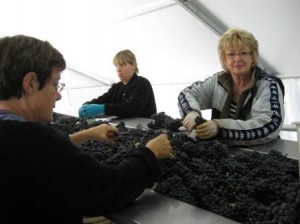


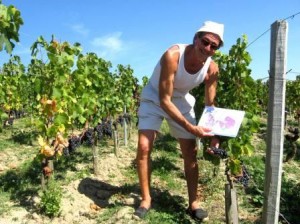

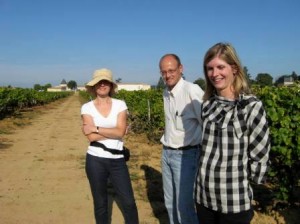
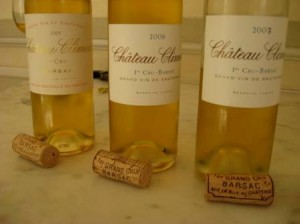

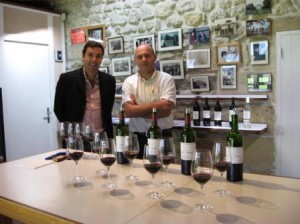
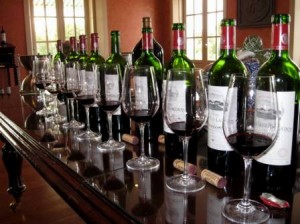
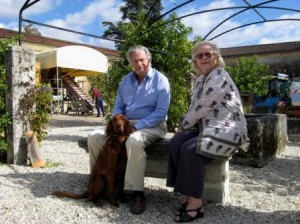
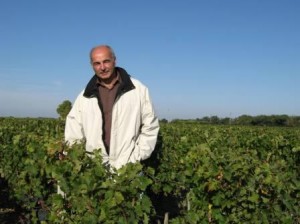
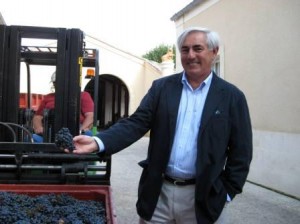
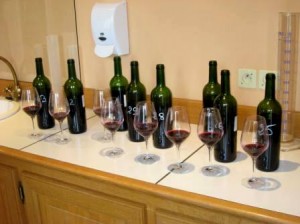
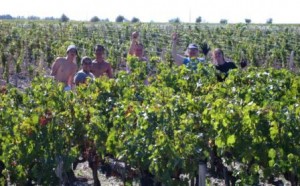
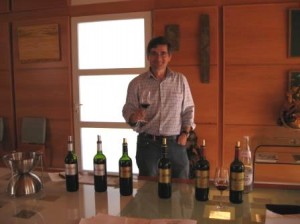
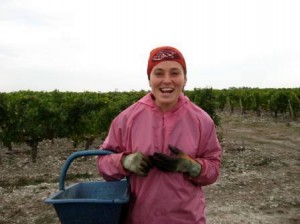
Hello,I love reading through your blog, I wanted to leave a little comment to support you and wish you a good continuation. Wishing you the best of luck for all your blogging efforts.
Thanks very much Fredrick. I am glad you have enjoyed reading my blog. J’adore le vin!
Hey mate, greetz from the Netherlands !
Excellent post as usual, thanks for writing all this helpful content on a regular basis.
Although I believe your current article is on the ideal track there are a few factors which i tend not to accept.
Gaylord, please do share with us the few factors! I am a firm believer in discussion. I am neither an oenologist nor a vineyard worker, and 2009 was my first serious during the harvest Bordeaux visit. I WAS in Bordeaux at the beginning of the harvest in 2006, when the rains fell – and wrote some articles for decanter.com that did not particularly please the Bordelais (!), and also at the end of the 2000 harvest, just in time for a party at a chateau. So, please share your thoughts in more detail if you have the time!
I often read your blog and always find it very interesting. Thought it was about time i let you know…Keep up the great work
I was just doing some surfing on my Garmin Phone during my free time at work , and I happened across something I thought was interesting . It linked to your site so I came over. I can’t really figure out the relevance between your site and the one I came from, but your site good none the less .
Excellent post as usual, thanks for writing all this helpful content on a regular basis.
I often read your blog and always find it very interesting. Thought it was about time i let you know…Keep up the great work
Excellent post as usual, thanks for writing all this helpful content on a regular basis.
I often read your blog and always find it very interesting. Thought it was about time i let you know…Keep up the great work
You’re a awesome writer. That was an well thought out post.
wow, sweet info
I really liked reading your site. Really good content. Please continue posting such excellent cotent.
Hi i just thought I should leave a comment as i really likeyour website its so interesting, keep it up!
you got a very excellent website, Glad I observed it through yahoo.
Funny I was discussing having a friend about this just the other day, we should share the identical views. I hope it is ok I added your site to some of my bookmark lists?
Actually attention-grabbing articles. I enjoyed reading it. Are these real images or has the art work been touched up they’re truly. Thanks for sharing a pleasant info.
The images have not been touched up, except for occasional cropping or brightness adjustment.
[…] And longevity. Domaine de Chevalier whites tend to last a very long time. One fine memory was a blind tasting in 2010 of the 2000 vintage. While that vintage proved generally excellent for reds, it was not quite as good for whites, which […]
*,* I am really thankful to this topic because it really gives useful information ,`:
Fantastic notes, thanks!
Amazing article! Bordeaux 2009: Chronicle of a harvest – Connections to Wine seriously tends to make my night a little bit nicer 😀 Keep going alongside the outstanding posts! Best regards,
I simply adore this webpage! The material is invaluable. Thanks a lot for all the posts and making my personal morning. Heed, Hi and thanks
Thanks for your reading. Hope you will follow my notes on 2011 Bordeaux as well… coming very soon!